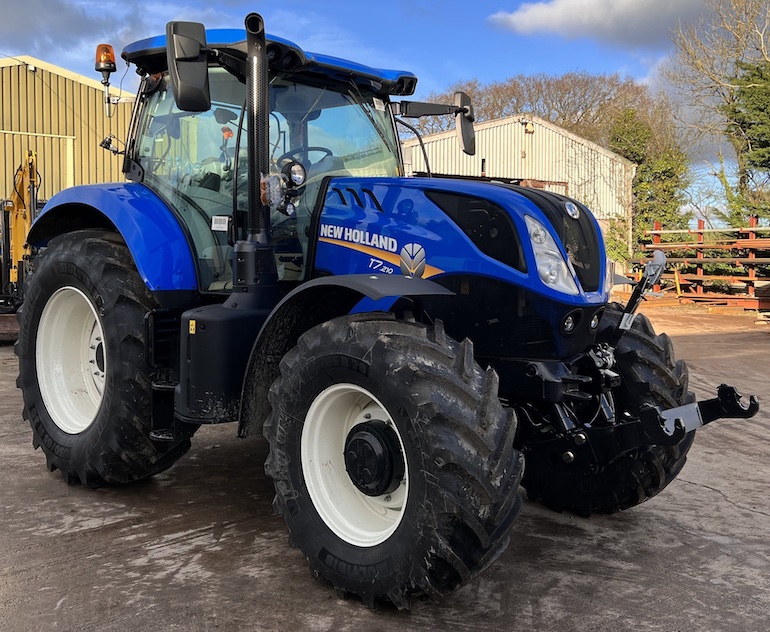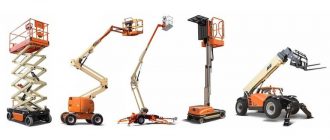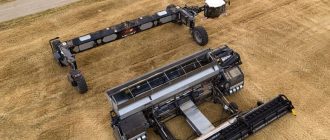OECD Tractor Codes, also known as the “OECD Codes for Agricultural Tractors,” are a set of internationally recognized standards and guidelines developed by the Organization for Economic Co-operation and Development (OECD) for the classification and testing of agricultural tractors. These codes are designed to ensure the safety, performance, and quality of tractors used in agriculture and forestry.

The OECD Tractor Codes cover various aspects of tractor design, specifications, and testing, including:
- Engine Emission Standards: The codes specify emission standards that tractors must meet to reduce their environmental impact. This includes guidelines for exhaust emissions and engine performance.
- Safety Standards: Safety is a critical concern in agricultural machinery. The codes include safety standards for tractor design, operator protection, and safety features like rollover protection structures (ROPS) and seat belts.
- Performance Testing: Tractors are tested for various performance criteria, such as engine power, fuel efficiency, and hydraulic system performance. These tests ensure that tractors meet specific performance requirements.
- Dimensions and Weight Limits: The codes define standards for tractor dimensions, weight limits, and load-carrying capacity. These standards help regulate the size and weight of tractors for safe and efficient operation.
- Driver Environment: Guidelines for the design of the driver’s environment, including ergonomics, visibility, and comfort, are included in the codes to ensure operator well-being.
- Noise Levels: Tractor noise emissions are regulated to reduce the impact on the operator’s hearing and the environment.
- Towing and Hitching: Standards for tractor hitches and towing capabilities are outlined to ensure safe and effective use of implements and attachments.
- Braking and Steering: Codes address tractor braking and steering systems to enhance control and safety.
OECD Tractor Codes serve as a reference for manufacturers, regulators, and users of agricultural tractors worldwide. Compliance with these codes helps ensure that tractors meet specific quality, safety, and environmental standards, promoting the responsible and efficient use of agricultural machinery in various countries. These codes contribute to harmonizing tractor standards across borders, benefiting both manufacturers and farmers.
Advantages of the OECD Tractor Codes
- Global Certificate: OECD approval numbers are recognized in 27 countries, including 5 non-OECD members (Brazil, China, India, the Russian Federation, and Serbia). This global recognition simplifies international trade and ensures that tractors meet consistent standards across various markets.
- Global Network of Testing Stations: OECD has currently 30 testing stations located in Europe, Asia, and America, which ensure compliance with OECD tests and procedures. This extensive network of testing stations facilitates convenient and accessible compliance testing for tractor manufacturers.
- Fast Turnaround: Average approval time is less than 5 days. Quick approval processes reduce delays in bringing tractors to market, saving time and resources.
- EU Equivalence: Equivalence of OECD Tractor Codes to EU Directives. This equivalence streamlines compliance efforts for tractors intended for the European market.
- Enhanced Credibility and Fair Trade: Tests done in a member country are always validated by the OECD’s Co-ordinating Centre. This enhances the credibility of tests for operators and guarantees compliance of manufacturers with rules and regulations promoting fair trade. Validation ensures that testing is reliable and fosters trust among tractor operators and manufacturers.
- Operator Safety: Operator safety is one of the main pillars of the OECD Tractor Codes. The certification of adequate Roll-over protective structures (ROPS) and falling object protective structures (FOPS) has contributed to the reduction of tractor fatal accidents. Prioritizing operator safety is a vital societal benefit that these codes offer.
- Constant Evolution: OECD Tractor Codes are updated regularly to take into account improvements in technical performance, safety, and environmental protection. Ongoing updates ensure that tractors remain aligned with the latest advancements, benefiting both users and the environment.
- New Markets: OECD Tractor Codes membership is constantly expanding, bringing new market opportunities. Access to emerging markets opens up growth possibilities for tractor manufacturers.
- Export Growth: On average, OECD Tractor Codes member countries report a 30 percent increase in tractor exports. Membership leads to increased export potential, boosting economic growth in member countries.
The inception of the Tractors Standard Code dates back to 1959. Before its establishment, different countries employed diverse test methods, resulting in incomparable outcomes. The OECD Standard Test Code was introduced to provide a globally recognized, standardized approach. Initially focusing on tractor performance, the Codes have since expanded to encompass forestry tractors and various aspects of performance, safety, and noise. These regulations undergo regular updates to stay current.

Since the Codes’ inception, over 2,000 tractor models have undergone testing to assess their performance characteristics, while 10,000 tractor variants have been evaluated for noise levels at the driver’s position and driver protection in rollover situations.
In each country, national testing stations responsible for tractor assessments adhere to the OECD Codes during their evaluations. Subsequently, they submit the results to the OECD for validation. The outcomes of approved tests are published and serve as valuable resources for tractor manufacturers, sellers, and users. Summaries of these results are accessible through an online database.
The OECD hosts and coordinates an annual Tractor Codes meeting and bi-annual Test Engineers Conferences. These events primarily serve to ensure the accurate and consistent interpretation of tractor testing procedures. They also provide a platform for experts to convene, review, and discuss testing practices.






what is the safety factor for trailer hitches in multiples of design working load or in multiples of gross trailer weight.
The safety factor for trailer hitches is typically expressed as a multiple of the design working load (DWL) or the gross trailer weight (GTW). The industry standard safety factors generally range as follows:
1. For Ball Hitches & Receiver Hitches:
Safety factor: 1.5x to 2.0x the Gross Trailer Weight (GTW)
Example: If a hitch is rated for 5,000 lbs GTW, it should withstand 7,500 to 10,000 lbs before failure.
2. For Pintle Hitches (Heavy-Duty Applications):
Safety factor: 2.0x to 3.0x the DWL
Example: If a pintle hitch is rated for 10,000 lbs DWL, it should withstand 20,000 to 30,000 lbs before failure.
Thank you, that is great help.
The towed machine has a loop or gudgeron but it doesn’t fit into the pintel hitch. Is there any reason we cannot use properly sized shackles to connect the two units together. We realize the makes a loose connection, but we can accept that if pulled very slowly.
what is your opinion?
3. For Fifth-Wheel & Gooseneck Hitches:
Safety factor: 1.5x to 2.5x the GTW
These hitches are designed for higher loads, often exceeding 20,000 lbs GTW, so their safety factors tend to be more conservative.
The exact safety factor may vary depending on the manufacturer, material quality, and regulatory requirements (e.g., SAE J684 for passenger vehicle hitches and SAE J847 for pintle hitches).